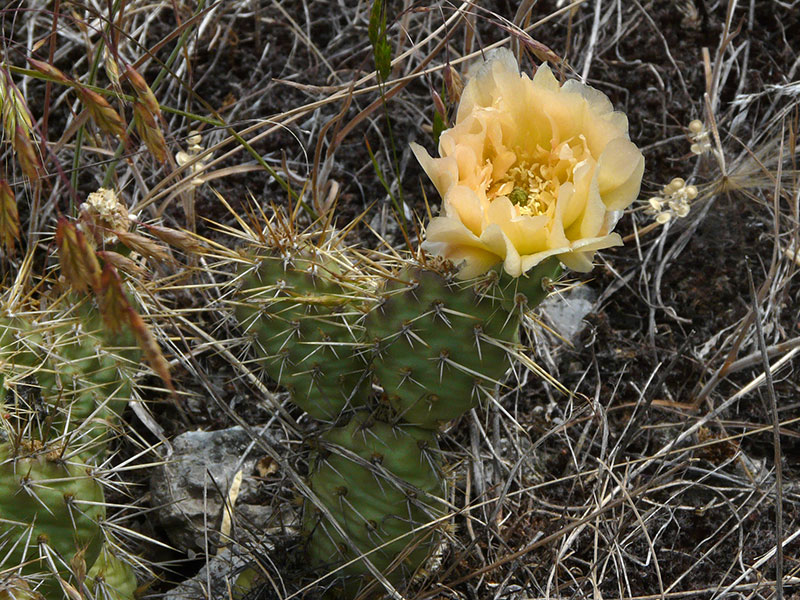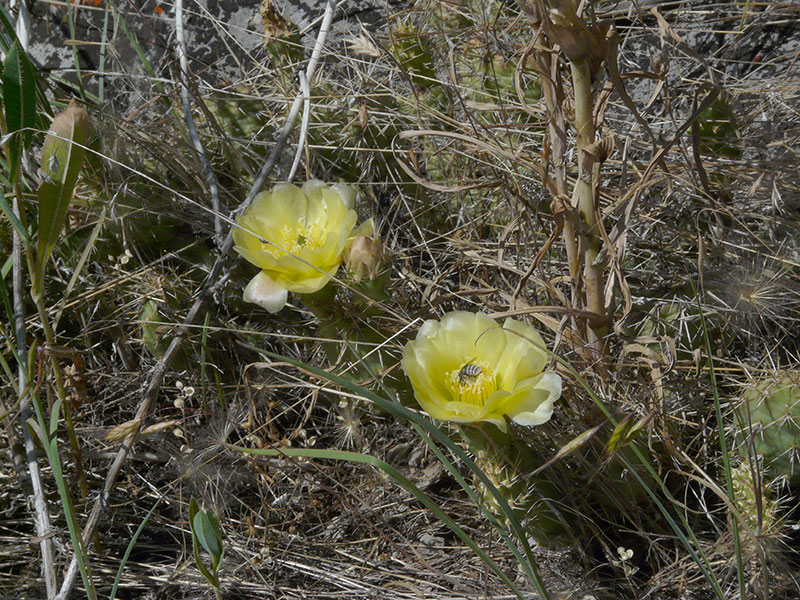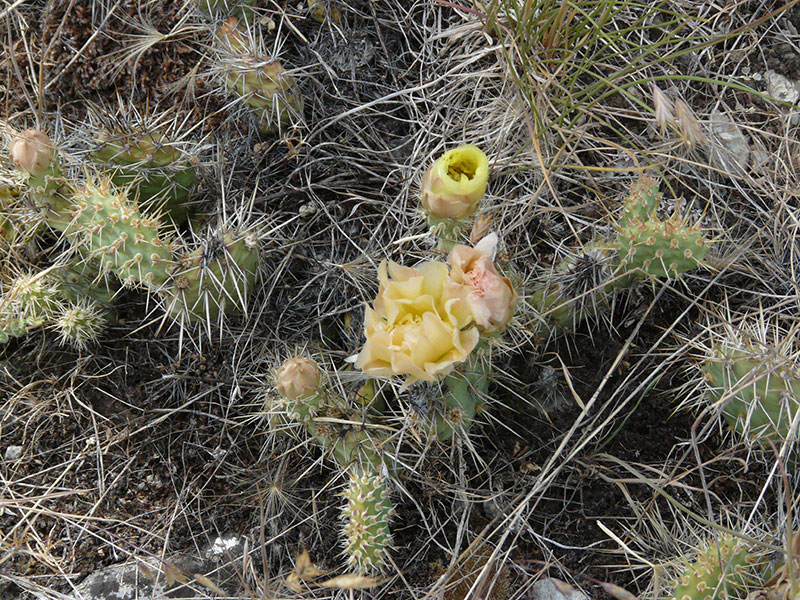Opuntia polyacantha / starvation cactus
- yellow or peach, complex, many-petaled flowers
- large globose, pointed buds with reddish scales
- cactus pads with long or short spines and nasty glochids
Also known as: panhandle prickly pear, plains prickly pear, hairspine cactus
Synonyms: Opuntia arenaria
See also: Opuntia fragilis / brittle pricklypear
Opuntia polyacantha is a perennial with short, flattened, thickened stems (pads) with spines and glochids. The flowers have many bright yellow or peachy petals. Flowering begins in early summer (July in the Valley) and may continue for as much as a month. The species is found in a range of exposed, dry habitats, usually in association with various grasses or sagebrush. It is also tolerant of salt and limey soils, making it well suited to the Valley… the limey soil bit, not the salt. The photos in the gallery here were taken in the “wild land” behind Cedron cemetery.
The Idaho Department of Fish and Game lists 7 species of cactus occurring in Idaho, including 4 species of Opuntia. To date, I have seen only these in the Valley. O. polyacantha is not only here, but is the most widespread cactus in the US. Its wide distribution is made possible in part by its excellent cold tolerance. When it gets cold, the plants go dormant and gradually loose water, becoming shrunken and wrinkled, further increasing their tolerance. With the return of warm weather, they rehydrate and resume growth.
Cacti in general have different rooting and water uptake strategies, two major ones being to have a deep system to access ground water or extensive but shallow systems to take advantage of really small rainfall events. O. polyacantha uses the latter strategy but isn’t fond of too much rain. Once acquired, water is retained in the succulent stems which are also the sites of photosynthesis. Like stonecrop (Sedum lanceolatum) the cacti fix their CO2 at night using the process known as Crassulacean acid metabolism, or CAM.
Although the opuntias propagate by seed, they also spread by layering, or by fragmentation, i.e. the rooting of broken off pads. Anything that breaks the pads off – from hail to folks with hoes – is essentially an agent for clonal colonization.
The USDA Fire Effects Information System site contains great information on the biology, ecology and management of this species. From that site… plains prickly pear is regarded as an important emergency forage for livestock, perhaps leading to the common name “starvation cactus”. Although the moisture content of aboveground tissues of plains prickly pear is high and it has good digestibility, the protein content in particular is low and the spines are a considerable deterrent (unless burned off). It is also important forage for a number of non-domestic mammals and provides shelter against predators for birds (especially quail), but is not apparently the preferred food for any except the black-tailed prairie dog (not an Idaho species).
| Color | |
|---|---|
| Family | |
| Blossom size | |
| Inflorescence size | |
| Inflorescence type | |
| When? | |
| Where? |



